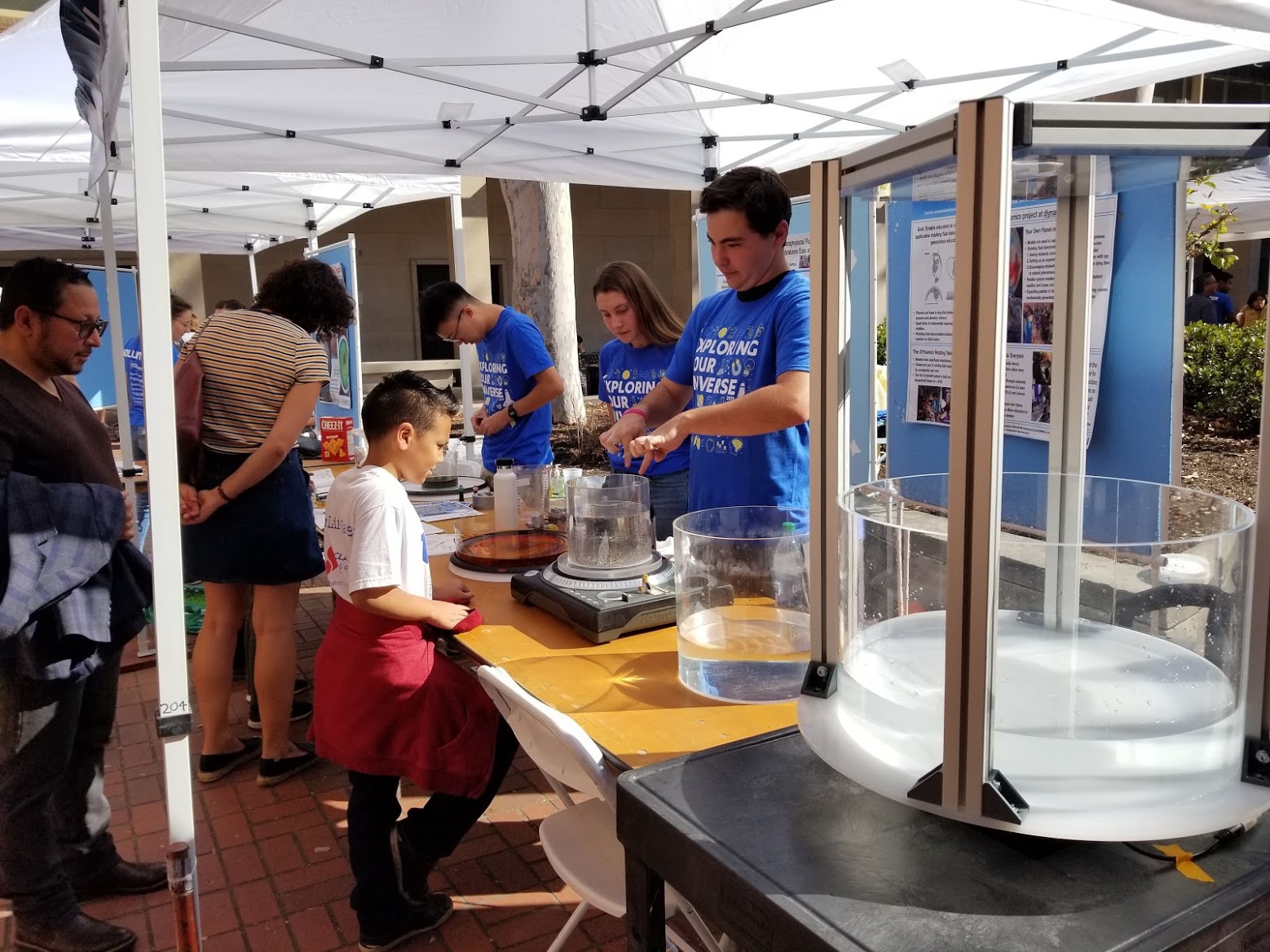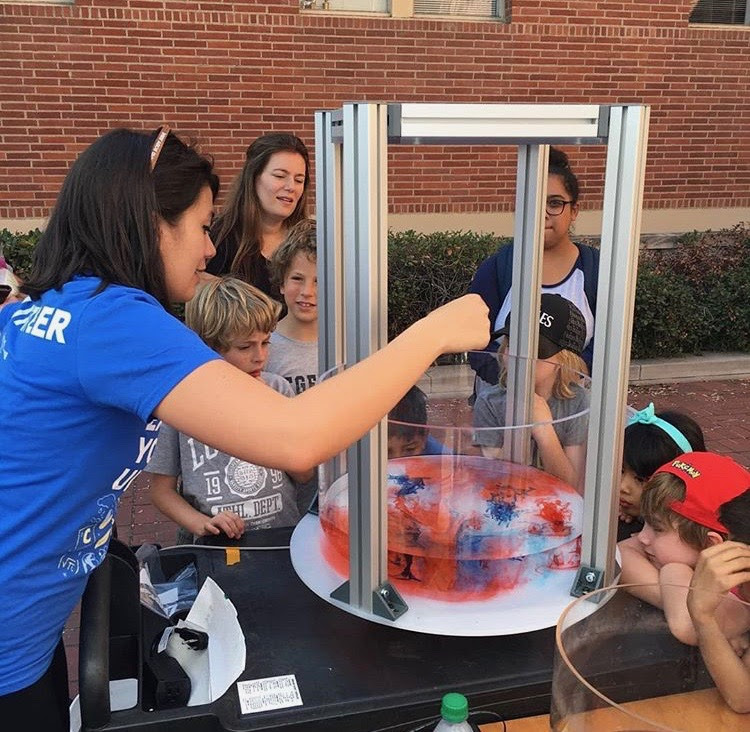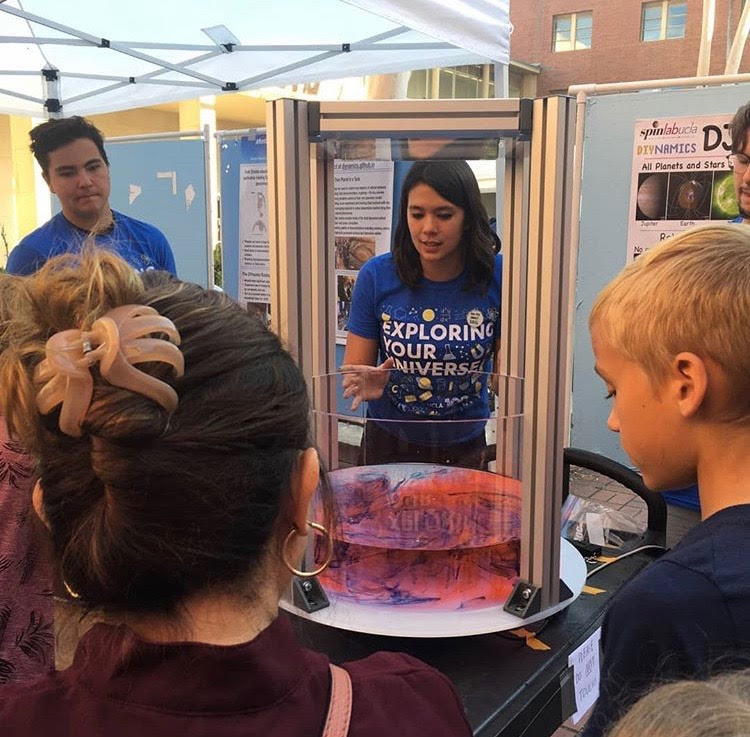- Fri 31 January 2020
- events
- Jordyn Moscoso
- #events, #outreach, #K-8, #baroclinic instability
[Note from Spencer: we’re thrilled to have this first post from one of our newest DIYnamics core team members, Jordyn Moscoso! Another post formally introducing her and some other new faces will be coming soon. And you can blame me for the lack of posts generally over the past couple months…plenty of great posts from Jordyn and others are in the queue! -S. Hill]

Norris, Carlyn, and Oliver hard at work at EYU! Norris demonstrated how to build the DIYnamics kits, Carlyn demonstrated how baroclinic instability creates eddies that transfer heat around the tank, and Oliver used a record player to show how centrifugal instability pushes chia seeds outward once rotation is turned on.
Early in November, the DIYnamics team returned to Exploring Your Universe (EYU) at UCLA. EYU is the largest outreach event for the Division of Physical Sciences every year, and it involves nearly every department. This year the DIYnamics tent included core team member Norris and our newest core team member Jordyn, as well as help from two volunteers, UCLA graduate student Francisco Spaulding-Astudillo, UCLA undergraduate student Carlyn Schmidgell, and Oliver from the Geffen Academy.
This year there were four different sections at the booth all showing different aspects of Do-It-Yourself dynamics!
- Norris demonstrated how to build the DIYnamics motor using legos and showed the difference between a rotating and non-rotating tank. This experiment shows how the effect of rotation works to organize flow into eddies!
- Carlyn showed how we use the DIYnamics setup to demonstrate how eddies exchange heat around the tank. This demonstration was built to show how eddies move warm water and air from low latitudes to high latitudes, like for example to the margins of Antarctica.
- Oliver showed centrifugal instability. This instability occurs when fluid spins very quickly, pushing all of the fluid outward toward the edges of the tank.
- Jordyn (that’s me) demonstrated 2D turbulence using the AOS rotating tank.
While not all of the setups you see here are built using Legos, the purpose of DIYnamics is to show that household objects (like a record player) can be used to simulate the dynamics and flows on planets!


Jordyn is showing how the effect of rotation works to create vortices in the flow when a fluid is rotating. When a little energy is added, or the fluid is disturbed by running a pen through the flow, the blobs of dye stretch and move and organize into coherent vortices!
A huge thank you to all of our volunteers, the UCLA Departments of Earth, Planetary and Space Sciences and of Atmospheric and Oceanic Sciences, the Society of Women Geoscientists, the EYU organizers, and good old Jon Aurnou and the rest of the SPINLab for help! And an equally huge thank you to all of the wonderful kids and parents who visited our booth. See you all in the fall for EYU 2020!
